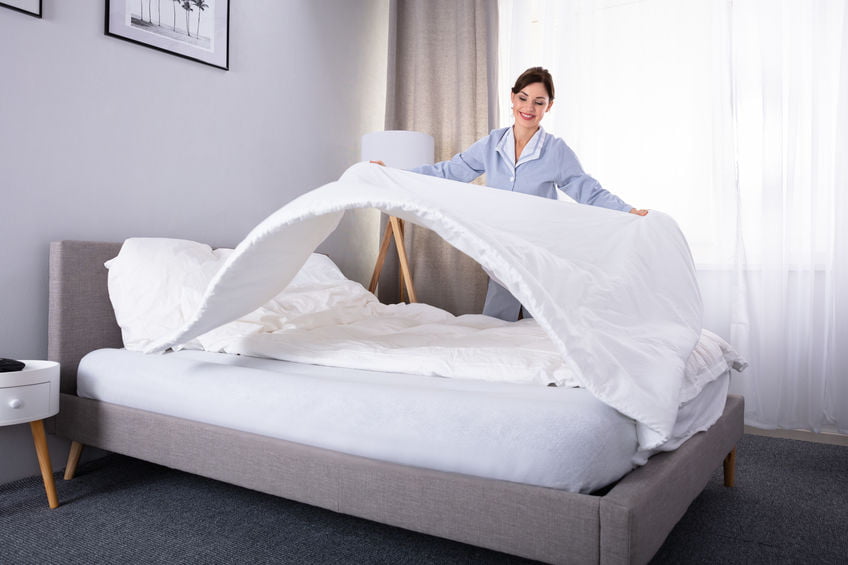
Seattle’s “Hotel Employees Safety Protections Ordinance” – Chapter 14.26
Seattle’s Hotel Employees Health and Safety Initiative has had a bumpy road on its way to becoming legislation. The ordinance provides protection for the health and safety of hotel employees working in Seattle. This ordinance is the result of Seattle voters passing Initiative 124 (I-124) in November 2016. Initiative 124 (I-124) was unfortunately struck down by the Washington Court of Appeals in December 2018. In September 2019, Seattle City Council again voted to adopt a series of ordinances aimed at protecting hotel employees. The four ordinances passed and went into effect on July 1st, 2020.
New hotel lone worker legislation in Seattle
The Seattle Hotel Employees Safety Protections Ordinance provides protection for hotel employees that work in Seattle hotels of 60 or more guest rooms, with greater protections applying to employees of hotels of 100 or more guest rooms. ¹
Within the ordinance Chapter 14.26 "Hotel" means a hotel or motel, as defined in Section 14.26.020, containing 60 or more guest rooms or suites of rooms suitable for providing lodging to members of the public for a fee, regardless of how many of those rooms or suites are occupied or in commercial use at any given time; ²
What is a lone worker panic button?
One of the four ordinances passed states employees must be equipped with a panic button and able to summon help if needed. The ordinance defines panic button as;
‘an emergency contact device that an employee may easily carry and activate. When activated, the panic button must summon immediate on-scene assistance from another employee, security guard, or representative of the employer to the employee's specific location; ³
Employers must provide these panic buttons free of charge to any worker who works within or delivers to guest rooms. The panic button must connect with someone who can immediately deploy a security guard, hotel employer representative, or another hotel employee to render assistance. ⁴
Each hotel in Seattle must also display a sign on the back of every guest room entry door informing patrons that "The Law Protects Hotel Housekeepers and Other Employees From Violent Assault and Sexual Harassment," ⁵ and letting guests know that staff and room attendants carry panic alarms.
State-wide lone worker legislation
Since the introduction of the Seattle based legislation, the rest of the state of Washington has come under the jurisdiction of RCW 49.60.515 . The state-wide law is intended to protect workers in the hospitality industry from sexual harassment and assault. The legislation goes one step further than the Seattle based ordinance and provides panic buttons and protection to hotel, motel, retail workers, security guards and janitors.
Learn more about the Washington State Panic Button Law: https://www.okaloneworker.com/legislation/blog/us/washington-state-panic-button-law/
Panic button safety solutions
There are many panic buttons and lone worker solutions available for hotel owners to keep their lone workers safe. One such solution is Ok Alone, the lone worker safety solution from Trusty Ox Systems.
Ok Alone’s lone worker safety app runs on a worker’s smart phone and allows lone workers to check in at regular intervals or request help if they need it. The ‘Help Button’ sends an alert to their supervisor, security personnel or a representative of their employer, informing them that a worker needs immediate assistance. This adheres to the Hotel Employees Safety Protections Ordinance. The help button can be pushed manually or triggered using voice commands. The safety solution has GPS capabilities that can locate a worker if they activate the ‘help’ alert.
Features of Ok Alone
Ok Alone also has features that allow lone workers to contact their supervisors directly. Workers have the option of sending a written or voice message directly to the person monitoring their safety.
Workers are able to change the frequency of their check ins with the ‘high-risk’ feature. If a worker enters an area where they feel vulnerable, such as a room that has occupants in it, they can reduce the check in time to as little as 10 minutes. After the time has passed with no alerts, the check in frequency will revert to the original count down duration.
The Ok Alone smartphone app works in conjunction with a website and cloud-based dashboard that can be used on a pc, laptop, tablet or another smartphone. The online dashboard will display a map supplying the monitor with the workers last known location if an alert is triggered. This will allow help to be sent to the correct location at a moment’s notice.
Book a Demo Today
Alternatively, get a free trial of the app
Want to try OK Alone? Click the button below and enter your details. It's free and no credit card is required.
